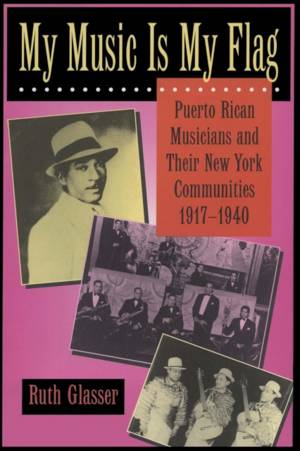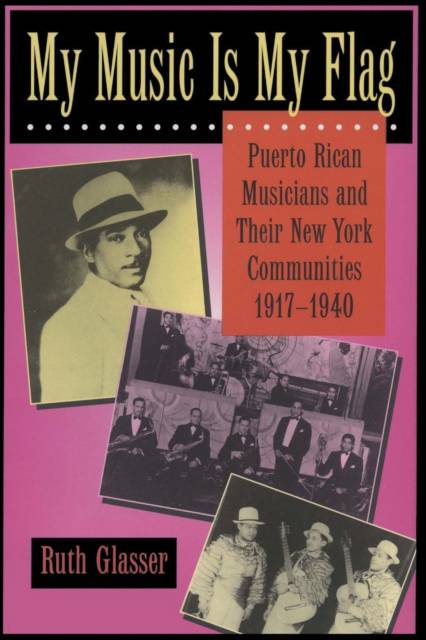
Door een staking bij bpost kan je online bestelling op dit moment iets langer onderweg zijn dan voorzien. Dringend iets nodig? Onze winkels ontvangen jou met open armen!
- Afhalen na 1 uur in een winkel met voorraad
- Gratis thuislevering in België vanaf € 30
- Ruim aanbod met 7 miljoen producten
Door een staking bij bpost kan je online bestelling op dit moment iets langer onderweg zijn dan voorzien. Dringend iets nodig? Onze winkels ontvangen jou met open armen!
- Afhalen na 1 uur in een winkel met voorraad
- Gratis thuislevering in België vanaf € 30
- Ruim aanbod met 7 miljoen producten
Zoeken
My Music Is My Flag
Puerto Rican Musicians and Their New York Communities, 1917-1940 Volume 3
Ruth Glasser
€ 54,45
+ 108 punten
Omschrijving
Puerto Rican music in New York is given center stage in Ruth Glasser's original and lucid study. Exploring the relationship between the social history and forms of cultural expression of Puerto Ricans, she focuses on the years between the two world wars. Her material integrates the experiences of the mostly working-class Puerto Rican musicians who struggled to make a living during this period with those of their compatriots and the other ethnic groups with whom they shared the cultural landscape.
Through recorded songs and live performances, Puerto Rican musicians were important representatives for the national consciousness of their compatriots on both sides of the ocean. Yet they also played with African-American and white jazz bands, Filipino or Italian-American orchestras, and with other Latinos. Glasser provides an understanding of the way musical subcultures could exist side by side or even as a part of the mainstream, and she demonstrates the complexities of cultural nationalism and cultural authenticity within the very practical realm of commercial music.
Illuminating a neglected epoch of Puerto Rican life in America, Glasser shows how ethnic groups settling in the United States had choices that extended beyond either maintenance of their homeland traditions or assimilation into the dominant culture. Her knowledge of musical styles and performance enriches her analysis, and a discography offers a helpful addition to the text.
Through recorded songs and live performances, Puerto Rican musicians were important representatives for the national consciousness of their compatriots on both sides of the ocean. Yet they also played with African-American and white jazz bands, Filipino or Italian-American orchestras, and with other Latinos. Glasser provides an understanding of the way musical subcultures could exist side by side or even as a part of the mainstream, and she demonstrates the complexities of cultural nationalism and cultural authenticity within the very practical realm of commercial music.
Illuminating a neglected epoch of Puerto Rican life in America, Glasser shows how ethnic groups settling in the United States had choices that extended beyond either maintenance of their homeland traditions or assimilation into the dominant culture. Her knowledge of musical styles and performance enriches her analysis, and a discography offers a helpful addition to the text.
Specificaties
Betrokkenen
- Auteur(s):
- Uitgeverij:
Inhoud
- Aantal bladzijden:
- 304
- Taal:
- Engels
- Reeks:
- Reeksnummer:
- nr. 3
Eigenschappen
- Productcode (EAN):
- 9780520208902
- Verschijningsdatum:
- 23/05/1997
- Uitvoering:
- Paperback
- Formaat:
- Trade paperback (VS)
- Afmetingen:
- 153 mm x 231 mm
- Gewicht:
- 471 g

Alleen bij Standaard Boekhandel
+ 108 punten op je klantenkaart van Standaard Boekhandel
Beoordelingen
We publiceren alleen reviews die voldoen aan de voorwaarden voor reviews. Bekijk onze voorwaarden voor reviews.











